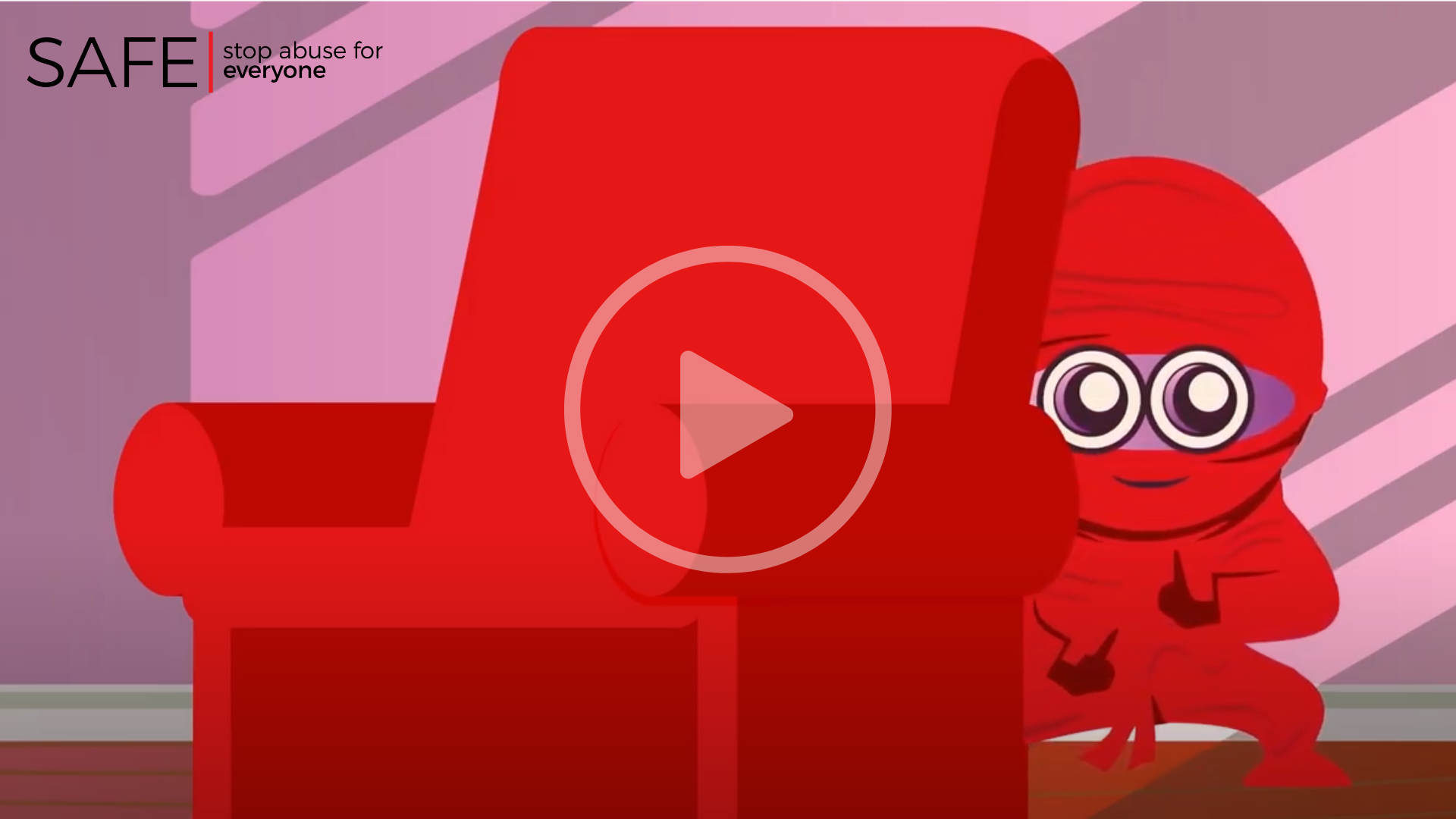Monsters, Domestic Violence, and Safety Ninjas
Written by SAFE
**This article first appeared in the United Way for Greater Austin Success by 6 Coalition Monthly Newsletter
I’d like you to imagine yourself as a parent in the following scenario:
You and your partner have 3 kids under the age of 6. Recently, you get annoyed by each other over almost everything – from cleaning to bills to giving your kids extra sweets, and so many other little things in between.
Now, it’s dinnertime on Wednesday. Your oldest kid is repeatedly expressing frustration with their younger siblings. Everyone’s starting to itch and freak out – and you all realize the family cat has fleas. You’re exhausted from a workday that was beyond stressful. Your partner, who just got home, is angry about how their boss treated them in a meeting. And then your youngest child accidentally knocks your freshly-poured, icy glass of lemonade off the table. The glass shatters on the floor.
And the anger monsters awake from inside you and your partner. Both of your anger monsters stream out of you in the form of hurtful words, loud yells and door slams. All three kids are scared. They’ve seen you both as monsters before, but are able to forget – until a moment like this.
I’d like to now ask you to take a moment, breathe, and calmly reflect on your feelings and reactions to the above scenario. What thoughts did you have? How have similar situations occurred in your family, within your community, and in your work life? Do you recognize that anger monster within?
The above scenario reminds us that we all have the ability to release our inner monsters. We’ve seen people act like monsters to others and us, and it’s possible our kids have seen us be monsters, as well. Many of us can acknowledge that our anger can take over, and we may even know why and recognize our triggers. But are we able to discuss this uncomfortable reality? It is too easy to not talk about what makes us angry and what happens when we get angry, but what is that teaching our kids? After all, as parents and caregivers, what we do and say in front of our kids, every day, has a huge impact on what they consider ‘normal.’
So how do we have conversations with our children about healthy relationships? How do we help our kids learn to be good friends without imposing power or control? And how do we as parents and caregivers model healthy relationships with our partner, kids, family members, friends, and community members?
October is Domestic Violence Awareness Month, and common community reactions are to host an event, have an activity, wear a purple ribbon, and participate in something commemorative. It is less common that people want to have ‘real talk’ about what domestic violence and unhealthy relationships look like in their community. Frequently we want to avoid these conversations because we do not want our behavior to be judged as violent or abusive. But imagine if we could together address unifying and needed questions, such as: Is occasional fighting ‘violence?’ If you yell something hurtful at your partner or kid because you’re angry, tired, or stressed, is that emotional abuse? What are the real ways that you can avoid turning into that anger monster?
This month, Austin Independent School District’s Parent Engagement Support Office and SAFE invite you to join community conversations about healthy relationships, with the goal of “breaking the cycle of violence” in our communities and schools. In our first conversation, we’ll collectively unpack why parents and caregivers fight. We’ll also take a look at a short animated video recently produced by SAFE: How Kids Can Be Safety Ninjas, which helps us dig deeper into supporting kids experiencing domestic violence.
Our hope with these community conversations is that together we can candidly and clearly examine the nuances of how we react to family and community issues. We hope that together we can talk about our anger monsters, with the ultimate goal of not allowing them to control us any longer.